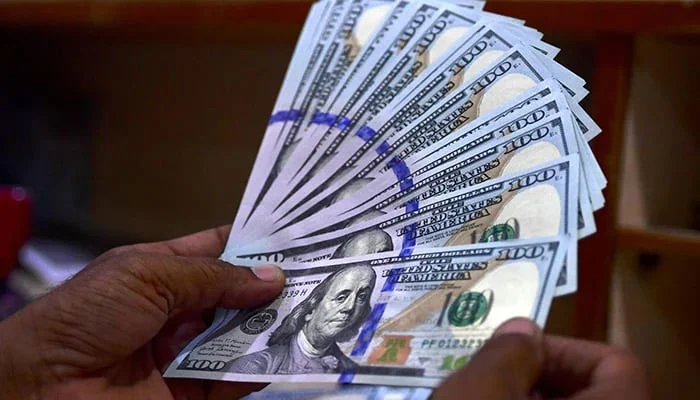By Mehtab Haider
Published in The News on May 22, 2024
ISLAMABAD: With an increase in per capita income in dollar terms to $1,680, Pakistan’s provisional growth rate turned positive and stood at 2.38 percent for the current fiscal year 2023-24, largely driven by the agricultural sector.
Although the government missed its annual GDP growth rate target of 3.5 percent, it achieved a growth rate higher than predicted by multilateral creditors, including the IMF and World Bank.
Wheat production reached a record high of 31.4 million tonnes, and cotton production rose to over 10.22 million bales during the current fiscal year. However, the electricity, gas, and water supply sectors witnessed a negative growth rate of 10.55 percent.
Despite turning the growth rate from negative to positive, the growth level of 2.38 percent is insufficient to significantly reduce poverty and unemployment. The per capita income in dollar terms increased to $1,680 in the current fiscal year, up from $1,568 in the previous year. The National Accounts Committee (NAC) held its 109th meeting under the secretary of the Planning Ministry on Tuesday, where they provisionally set the GDP growth rate for FY 2023-24 at 2.38 percent. The final and revised growth rates for FY 2021-22 and FY 2022-23 are 6.18 percent and -0.21 percent, respectively. The agricultural sector saw provisional growth of 6.25 percent, while both the industrial and services sectors grew by 1.21 percent.
Agricultural growth was mainly due to significant increases in major crops, with wheat production up 11.64 percent to 31.44 million tonnes, cotton production up 108.22 percent to 10.22 million bales, and rice production up 34.78 percent to 9.87 million tonnes. Conversely, sugarcane production fell by 0.39 percent to 87.64 million tonnes, and maize production decreased by 10.35 percent to 9.85 million tonnes.
Other notable figures in the agricultural sector include a 0.90 percent growth in other crops, a 47.23 percent increase in cotton ginning and miscellaneous components, a 3.89 percent rise in livestock, and a 3.05 percent growth in forestry.
The industrial sector grew by 1.21 percent provisionally. The mining and quarrying industry saw a growth of 4.85 percent, driven by increases in crude oil production (1.51 percent), coal (37.72 percent), and other minerals (7.57 percent), such as limestone (7.95 percent) and marble (23.22 percent). Large-scale manufacturing experienced a nominal growth of 0.07 percent, with mixed trends across various groups. The electricity, gas, and water supply industries declined by 10.55 percent due to reduced subsidies in real terms.
The construction industry grew by 5.86 percent due to increased construction-related expenditures by both private and public sector enterprises.
The services sector also showed a growth of 1.21 percent in 2023-24. Wholesale and retail trade grew by 0.32 percent due to positive agricultural output. The transport and storage industry increased by 1.19 percent due to growth in railways, water transport, and road transport.
High inflation resulted in negative real growth in the Information and Communication (-3.02 percent), Finance and Insurance (-9.64 percent), and Public Administration and Social Security (-5.25 percent) sectors. However, the education, human health, and social work industries posted positive growth rates of 10.30 percent and 6.80 percent, respectively. Other private services were estimated to grow by 3.58 percent.
The NAC approved the third quarter (Jan-March) and annual estimates for the financial year 2023-24. The economy witnessed upward revisions in Q1 (July-Sept) and Q2 (Oct-Dec) for 2023-24, posting growth rates of 2.71 percent and 1.79 percent, compared to 2.50 percent and 1.0 percent presented in the 108th NAC meeting, respectively. The GDP for Q3 (Jan–March) 2023-24 showed a growth rate of 2.09 percent.
The final and revised growth rates for FY 2021-22 and FY 2022-23 are 6.18 percent and -0.21 percent, respectively. The committee approved the revised first and second quarter estimates for 2023-24, with overall GDP growth for Q1 and Q2 revised to 2.71 percent and 1.79 percent, compared to 2.50 percent and 1.0 percent estimated in the 108th NAC meeting.
The revised growth in agriculture during Q1 remained stable at 8.59 percent versus 8.58 percent presented earlier, while growth in Q2 improved from 5.02 percent to 5.83 percent due to upward revisions in important crops and other crops.
Despite significant improvement in mining and quarrying from 7.78 percent to 15.46 percent, industrial activities posted a downward revision from -0.24 percent to -2.44 percent due to a decline in electricity, gas, and water supply.
However, Q2 growth in industrial activities saw an upward revision from -0.84 percent to 0.09 percent due to positive changes in mining quarrying, and construction, despite downward revisions in large-scale manufacturing and electricity, gas, and water supply.
The revised growth in services during Q1 and Q2 improved from 0.92 percent and 0.01 percent to 2.02 percent and 0.75 percent, respectively, due to improvements in information and communication, public administration and social security, education, and human health and social work activities.
The economy posted a stable growth of 2.09 percent during Q3 of FY 2023-24, with growth in agriculture, industry, and services at 3.94 percent, 3.84 percent, and 0.83 percent, respectively. During Q3, all constituents of agriculture contributed positively. Despite negative growth in the construction industry (-15.75 percent), industrial growth of 3.84 percent was attributable to mining and quarrying, large-scale manufacturing, and electricity, gas, and water supply.
Overall growth in services was positive (0.83 percent) during Q3 2023-24, with a mixed trend among its constituents. The committee approved the overall final growth of annual GDP for FY 2021-22 at 6.18 percent, slightly revised from 6.17 percent in the 107th meeting.
The final growth rates in agriculture, industry, and services for FY 2021-22 are 4.21 percent, 7.01 percent, and 6.69 percent, respectively. The revised growth for FY 2022-23 is -0.21 percent, slightly revised from -0.17 percent. The revised estimates showed an improvement in agriculture from 2.25 percent to 2.27 percent, stability in industry, and a slight decline in services due to downward revisions in education, human health, and social work activities.




